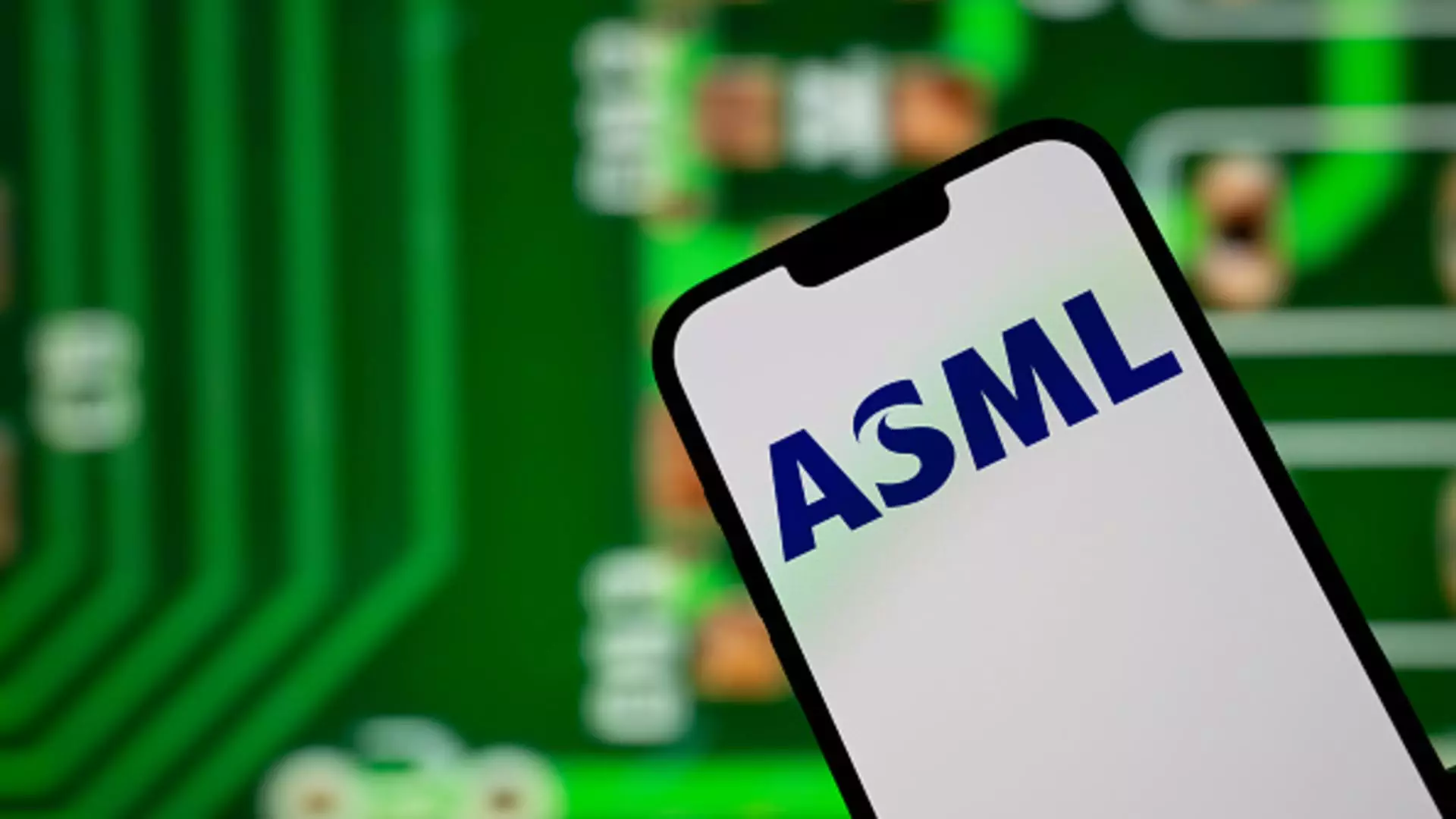The landscape of the semiconductor industry is shifting, and not for the better. ASML, the Dutch behemoth known for its critical chipmaking machines, has recently reported results that fell short of market expectations—a grim reflection of the complex interplay between global trade policies and technology demand. With a mere €7.74 billion in net sales, ASML’s numbers were disappointing compared to the soaked-up forecasts of €7.8 billion. Even with profit edges aligned at €2.36 billion—a slight uptick from expectations—the financial report raises alarms about the strategic future of ASML and the broader semiconductor sector.
The company’s net bookings for the first quarter of 2025 amounting to €3.94 billion highlight another stark reality. This figure lags behind analysts’ projections of €4.89 billion, painting a picture of an industry grappling with uncertainty and potential decline. The 5% drop in shares following this announcement reflects investors’ anxiety, confirming that the euphoria surrounding semiconductor companies is beginning to wear thin.
Impact of U.S. Trade Restrictions
At the heart of ASML’s recent struggles are the murky waters of new U.S. trade restrictions. CEO Christophe Fouquet’s comments on the matter are deeply concerning—while he maintains a facade of optimism, he acknowledges growing uncertainty among customers, driven chiefly by tariffs and geopolitical tensions. The intricate dependencies of global supply chains mean that ASML’s performance is no longer isolated; it is inextricably linked with the political quagmire of U.S. trade decisions.
Fouquet’s assertion that their revenue forecast for 2025 still holds at between €30 billion and €35 billion sounds more like wishful thinking than grounded forecasting. The uncertainty embattling key customers will likely push ASML toward the low end of that guidance. This murkiness can only erode confidence as trade sanctions threaten to disrupt demand extensively. Analysts like Ben Barringer from Quilter Cheviot assert that the impact could be “widespread.” However, characterizing it as “too early to tell” is a gross understatement; the reality is that the clock is ticking and the situation is escalating.
The Ripple Effect on Global Chip Stocks
Following ASML’s projections, global chip stocks have exhibited fragility, encountering turbulence amidst a flurry of market woes. Fear of how U.S. President Trump’s tariff plans could upend the delicate supply chain has left investors on edge. On one hand, proclamations of exempting certain technologies, such as smartphones and semiconductors, suggested a calm before the storm. Conversely, comments indicating that there would be no exception for electronics have stoked fears, unsettling the very foundations on which companies like ASML and their clientele operate.
The precariousness of the situation has been further exemplified by Nvidia’s staggering expected quarterly charge of $5.5 billion due to the fallout from export restrictions. This situation raises critical questions regarding the sustainability of global semiconductor production, especially as the U.S. government leans toward protectionism under the guise of national security.
Trade Wars: The Hidden Costs
The unfolding semiconductor trade war paints a broader story about not just numbers, but about innovation stifling and research setbacks. Countries that once thrived under collaborative, interdependent markets now face isolation. U.S. trade officials, in an effort to safeguard national interests, are steering the country toward a path that could deter technological advancement in critical sectors like semiconductors. Such a regressive stance could reduce the ability of companies like ASML to innovate, affecting not only their downstream clients but also consumers worldwide.
This precarious position particularly undermines the value of collaboration and mutual benefit—principles that have long fueled the technology sector’s expansive growth. The narrowing focus on national interests, rather than international welfare, could serve as a metaphorical chokehold for not only ASML but the overarching tech ecosystem.
Understanding the implications of such trade wars mandates a critical lens, highlighting how aggressive nationalism weakens the very processes that propel economic and technological advancement. For ASML, navigating these waters will require extraordinary strategic foresight, lest they find themselves ensnared in a cycle of decline—not merely a blip, but a descent into mediocrity.
A Call for Global Cooperation
The need of the hour is a renewed commitment to global cooperation and dialogue to mitigate the increasingly worrisome trajectory set by current policies. The semiconductor industry is not merely a local or regional concern; it is a global lifeline that influences countless facets of modern life. The optimism expressed by some industry leaders rings hollow against a backdrop of trade wars and uncertainty; true resilience can only be achieved by recognizing and embracing interdependence rather than shunning it.
As ASML and similar entities forge ahead, they must be vigilant in demand forecasting amidst this volatility. The way forward entails not only adapting to changes but actively engaging in diplomatic channels to redefine the frameworks that govern international trade and innovation. In this landscape riddled with threats, the question remains: will the semiconductor industry rise to the occasion, or will it succumb to the forces of isolation and protectionism?

